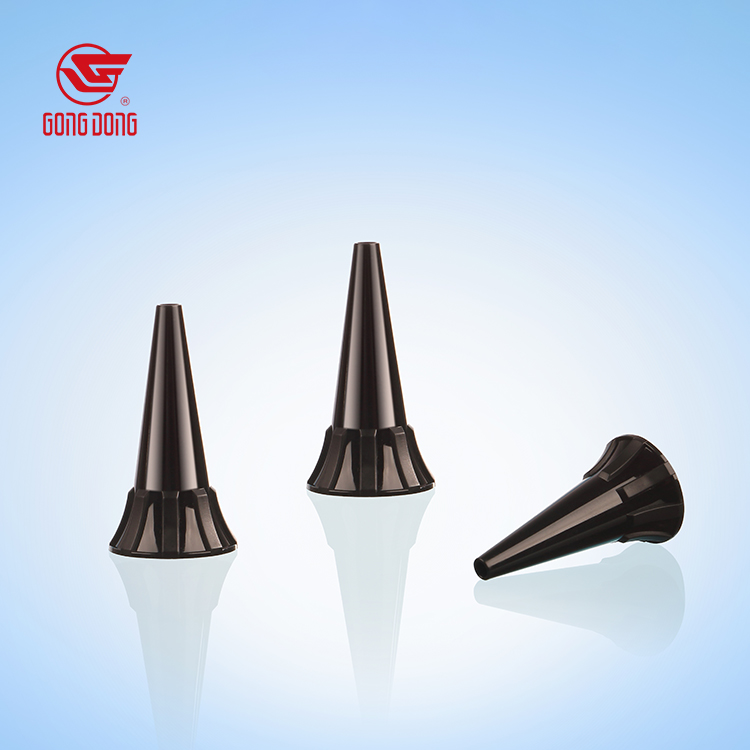

Views: 0 Author: Site Editor Publish Time: 2025-11-03 Origin: Site








The ear speculum is an essential tool in otoscopic examinations, facilitating the visualization of the ear canal and tympanic membrane. This instrument is pivotal for diagnosing various auditory and ear canal conditions. The ear speculum is crafted from high-quality plastics, ensuring both patient safety and diagnostic accuracy. In this article, we will delve into the functionalities, applications, and benefits of ear speculums, exploring their role in clinical settings and their importance in modern medicine.
Ear speculums are designed to aid healthcare professionals in performing safe and effective ear examinations. Their smooth, tapered designs allow for comfortable insertion and a secure fit with standard otoscope heads. The precision molding technology used in their production guarantees consistent product quality and reliability. These speculums are available in multiple sizes, such as 2.5 mm for pediatric or narrow canals and 4.25 mm for adult use, allowing flexible selection to suit patients of different ages and anatomies.
Constructed from medical-grade polypropylene (PP), ear speculums are made using injection molding techniques. This non-toxic, high-strength material is chosen for its durability and patient comfort. The black finish of the speculum reduces glare from transmitted light, enhancing visual contrast during examinations. The universal otoscope compatibility ensures that these speculums can be used with all major otoscope brands, making installation and removal both fast and secure.
The primary use of ear speculums is for visual inspection of the ear canal and tympanic membrane. They are also used in conjunction with procedures such as cerumen and foreign-body removal, specimen collection, and other in-ear procedures. The transparent construction and universal snap-on interface allow for easy installation and clear visualization, reducing the risk of cross-contamination due to their single-use design.

Ear speculums play a crucial role in routine ear canal and tympanic membrane examinations. During otoscopic examinations, the speculum is gently inserted into the ear canal and angled slightly toward the nose to visualize canal walls and the tympanic membrane. This aids in diagnosing conditions such as otitis media and tympanic membrane perforations. The speculum also facilitates the removal of impacted cerumen or small foreign bodies, providing a clear view and guiding forceps or irrigation tools for improved precision and safety.
Prior to minor in-ear procedures, such as fungal culture sampling, tissue biopsy, or tympanocentesis, the speculum keeps the canal patent and clears debris. This establishes a visual channel for accurate intervention and specimen collection. The tip-grip design of the speculum ensures secure attachment and ejection, improving workflow efficiency and reducing the risk of cross-contamination.
In conclusion, the ear speculum is an indispensable tool in the field of otolaryngology. Its design and functionality significantly enhance the accuracy and safety of ear examinations. By providing clear visualization and facilitating various in-ear procedures, ear speculums contribute to better diagnostic outcomes and patient care. As healthcare continues to evolve, the importance of reliable and efficient tools like the ear speculum cannot be overstated. For those interested in learning more about the applications and benefits of ear speculums, the ear speculum remains a vital resource.
Q1: What is the primary function of an ear speculum?
A: The primary function of an ear speculum is to aid in the visual inspection of the ear canal and tympanic membrane during otoscopic examinations.
Q2: Why are ear speculums made from polypropylene?
A: Polypropylene is chosen for its non-toxic, high-strength properties, ensuring durability and patient comfort during examinations.
Q3: How does the ear speculum reduce cross-contamination risk?
A: The single-use design of the ear speculum effectively reduces cross-contamination risk by eliminating the need for cleaning or sterilization after use.
Q4: Are ear speculums compatible with all otoscope models?
A: Yes, ear speculums are designed to be universally compatible with most standard otoscope models.
Q5: What sizes are available for ear speculums?
A: Ear speculums are available in sizes 2.5 mm for pediatric or narrow canals and 4.25 mm for adult use.
Q6: How do ear speculums aid in cerumen removal?
A: Ear speculums provide a clear view and guide forceps or irrigation tools during the removal of impacted cerumen, improving precision and safety.
Q7: What is the benefit of the tip-grip design in ear speculums?
A: The tip-grip design ensures secure attachment and ejection, improving workflow efficiency and reducing the risk of cross-contamination.